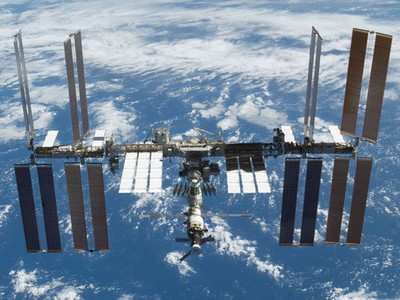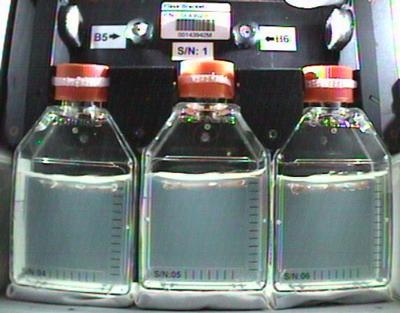Goal Is To Study How Plants Germinate In A Microgravity
Environment
"Plants in Space," a unique science project designed to allow
students and teachers to examine root growth in microgravity and
compare the results with those from plants used in their own
ground-based experiments, has been initiated aboard the
International Space Station.

The National Space Biomedical Research Institute (NSBRI) is
funding the project. It began Tuesday, Sept. 20, when space station
astronauts planted Brassica rapa seeds during the first of four
scheduled five-day trials. The project's primary scientific goal is
to investigate the influence of light on root orientation. "More
than 31 million students have participated in educational
demonstrations on the space station, and more than a million
students have done experiments linked to the space station," said
NASA's International Space Station Program Scientist Julie
Robinson. "It's a powerful force motivating young people to pursue
careers that look to the future."
During the trials, astronauts plant seeds in a clear
nutrient-filled gelatin. They will take daily photographs of root
growth during each trial. Students will design and conduct their
own experiments with the help of a teacher's guide developed by the
NSBRI. Students will be able to compare observations and results of
their investigations to the station experiments and the project's
ground-based control. "An important aspect of the Plants in Space
project is that it is not cookbook science," said Nancy P. Moreno,
NSBRI education and outreach program principal investigator,
professor of allied health sciences at Baylor College of Medicine
(BCM) and senior associate director of its Center for Educational
Outreach. "Unfortunately, too often in science class, kids follow a
procedure, get a predetermined result and really don't experience
the excitement of science and the whole process of discovery. We
know that if we enable students to ask their own questions, design
their own experiments and discover their own answers, they are more
likely to develop a greater interest in science."
Experiment Medium NSBRI Photo

The Plants in Space project seeks to determine if white light,
heavy in the blue spectrum, can influence the direction of root
growth in microgravity. Previous research has shown that plant
roots respond weakly to blue light. The project also will study the
effects, if any, of seed orientation on the direction of root
growth. The experiment design calls for mounting seeds in different
orientations on a piece of balsawood, then placing them on top of
the growth medium. Data gained from the primary and secondary
scientific investigations may help develop systems and techniques
so future astronauts can grow their own food during extended
spaceflights to destinations such as Mars.
NSBRI, funded by NASA, is a consortium of institutions studying
the health risks related to long-duration spaceflight. The
institute's science, technology and education projects take place
at more than 60 institutions across the United States. NSBRI is
funding Plants in Space, conducted in cooperation with BCM,
BioServe Space Technologies at the University of Colorado in
Boulder and NASA.
We'll have to see if a vegetable garden is in the works pending
the next delivery of supplies.
 ANN's Daily Aero-Linx (05.06.25)
ANN's Daily Aero-Linx (05.06.25) ANN's Daily Aero-Term (05.06.25): Ultrahigh Frequency (UHF)
ANN's Daily Aero-Term (05.06.25): Ultrahigh Frequency (UHF) ANN FAQ: Q&A 101
ANN FAQ: Q&A 101 Classic Aero-TV: Virtual Reality Painting--PPG Leverages Technology for Training
Classic Aero-TV: Virtual Reality Painting--PPG Leverages Technology for Training Airborne 05.02.25: Joby Crewed Milestone, Diamond Club, Canadian Pilot Insurance
Airborne 05.02.25: Joby Crewed Milestone, Diamond Club, Canadian Pilot Insurance




